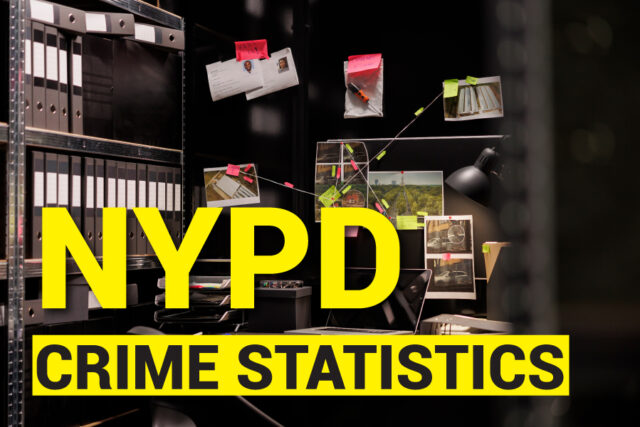As a resident of New York City, understanding the crime landscape is of paramount importance for ensuring our safety and well-being. The New York Police Department (NYPD) plays a crucial role in maintaining law and order, and their crime statistics offer invaluable insights into the city’s security situation. In this comprehensive analysis, we delve into the latest NYPD crime statistics, uncovering trends, patterns, and factors that shape the criminal landscape in the Big Apple.
Understanding The Significance Of Crime Statistics
Crime statistics serve as a powerful tool for law enforcement agencies, policymakers, and the general public. They provide a quantitative measure of criminal activity, enabling data-driven decision-making and resource allocation. By analyzing these numbers, we can identify areas of concern, track progress, and develop strategies to enhance public safety. Moreover, crime statistics foster transparency and accountability, allowing citizens to stay informed and engaged in their communities.
Overview Of The Latest NYPD Crime Statistics
The NYPD’s crime statistics encompass a wide range of offenses, from minor infractions to serious felonies. In the most recent report, the overall crime rate in New York City has experienced a notable shift, with certain categories witnessing an increase while others have seen a decline. These fluctuations reflect the dynamic nature of criminal activity and highlight the need for continuous monitoring and proactive measures.
Analyzing The Overall Crime Rate In New York City
According to the latest NYPD crime statistics, the overall crime rate in New York City has experienced a slight uptick compared to the previous year. While this increase may raise concerns, it is essential to contextualize the numbers within the broader historical trends. Over the past decade, the city has witnessed a significant decline in crime rates, making New York one of the safest major cities in the United States.
Key Trends And Patterns In Crime Statistics
Upon closer examination, the crime statistics reveal several noteworthy trends and patterns:
Property Crimes: Offenses such as burglary, larceny, and motor vehicle theft have seen a moderate increase, potentially linked to economic factors and opportunistic criminal behavior.
Violent Crimes: Incidents involving violence, including assault, robbery, and homicide, have experienced a slight decrease, reflecting the NYPD’s efforts in targeted enforcement and community outreach programs.
Cybercrime: With the rise of technology and online activities, cybercrime has emerged as a growing concern, with cases of fraud, identity theft, and hacking on the rise.
Seasonal Fluctuations: Certain types of crimes, such as burglaries and thefts, tend to exhibit seasonal patterns, with higher rates during specific times of the year, potentially influenced by factors like weather and holiday seasons.
Exploring Crime Rates By Borough
New York City comprises five distinct boroughs, each with its unique characteristics and challenges. The crime statistics reveal varying levels of criminal activity across these boroughs:
- Manhattan: As the city’s financial and cultural hub, Manhattan experiences a higher rate of property crimes, particularly in areas with significant foot traffic and tourist attractions.
- Brooklyn: With its diverse neighborhoods and population density, Brooklyn has seen an increase in certain types of crimes, such as robberies and assaults, necessitating targeted law enforcement strategies.
- Queens: While generally considered a safe borough, Queens has witnessed a rise in specific crime categories, including auto theft and residential burglaries, prompting increased vigilance and community engagement.
- The Bronx: Historically, the Bronx has faced higher levels of crime, but recent years have seen a downward trend, reflecting the collaborative efforts of law enforcement and community-based initiatives.
- Staten Island: As the least populous borough, Staten Island boasts relatively lower crime rates compared to the other boroughs, although certain pockets may require additional attention and resources.
Examining Specific Types Of Crimes And Their Prevalence
The NYPD crime statistics provide a granular view of various crime categories, allowing for targeted analysis and response strategies. Some of the notable offenses and their prevalence include:
- Robbery: While overall robbery rates have declined, certain neighborhoods and areas with high foot traffic continue to experience incidents of muggings and street robberies.
- Assault: Assaults, both physical and sexual, remain a concern, with domestic violence and hate crimes contributing to these statistics.
- Burglary: Residential and commercial burglaries have seen an increase, highlighting the need for improved security measures and public awareness campaigns.
- Auto Theft: Despite advancements in vehicle security technology, auto theft continues to be a persistent issue, particularly in areas with limited parking and surveillance.
- Drug-Related Offenses: The illicit drug trade remains a significant contributor to criminal activity, with arrests for possession, distribution, and trafficking of narcotics being a focal point for law enforcement efforts.
Factors Influencing Crime Rates In NYC
Crime rates are influenced by a multitude of factors, including socioeconomic conditions, demographic shifts, and environmental factors. In New York City, some of the key factors that may impact criminal activity include:
Economic Conditions: Periods of economic downturn or financial instability can lead to an increase in certain types of crimes, such as property crimes and theft, as individuals may resort to illegal means to meet their financial needs.
Population Density: New York City’s high population density and urban environment can create opportunities for criminal activities, particularly in areas with limited resources or lack of community engagement.
Social And Cultural Factors: Factors such as education levels, family structures, and cultural norms can influence criminal behavior and the prevalence of certain types of crimes within specific communities.
Law Enforcement Strategies: The NYPD’s proactive policing strategies, resource allocation, and community engagement efforts play a crucial role in deterring and responding to criminal activities.
Environmental Factors: Elements such as urban design, lighting, and surveillance can either facilitate or deter criminal behavior in specific areas of the city.
Critiques And Limitations Of NYPD Crime Statistics
While the NYPD crime statistics provide valuable insights, it is essential to acknowledge their limitations and potential critiques:
- Underreporting: Some crimes, particularly those involving domestic violence, sexual assault, or undocumented individuals, may be underreported due to fear, stigma, or lack of trust in law enforcement.
- Data Collection And Reporting Methodologies: Inconsistencies in data collection and reporting methodologies across precincts or agencies can lead to discrepancies and potential inaccuracies in the statistics.
- Bias And Discrimination: Concerns have been raised regarding potential biases and discriminatory practices in law enforcement, which may impact the accuracy and fairness of the crime statistics.
- Contextual Factors: Crime statistics alone may not fully capture the complexities and nuances of criminal behavior, as they fail to account for underlying socioeconomic, cultural, and environmental factors.
How The NYPD Uses Crime Statistics For Law Enforcement
The NYPD utilizes crime statistics as a critical tool for effective law enforcement and resource allocation. By analyzing these data, the department can:
Identify Hot Spots
Crime statistics help pinpoint areas or neighborhoods with higher rates of specific crimes, allowing for targeted deployment of resources and proactive policing strategies.
Allocate Resources Efficiently
By understanding crime patterns and trends, the NYPD can allocate personnel, equipment, and funding more efficiently to address areas of concern.
Develop Targeted Strategies
Crime statistics inform the development of targeted strategies and initiatives tailored to specific crime categories or geographic areas, enhancing the effectiveness of law enforcement efforts.
Measure Effectiveness
By tracking crime rates over time, the NYPD can evaluate the effectiveness of its strategies and make data-driven adjustments as needed.
Collaborate With Communities
Crime statistics serve as a basis for community engagement and collaboration, fostering trust and open communication between law enforcement and the public.
The Impact Of Crime Statistics On Community Safety
Crime statistics play a vital role in shaping perceptions of community safety and influencing individual and collective behaviors. Higher crime rates can lead to increased fear and anxiety among residents, potentially impacting their quality of life and willingness to engage in community activities. Conversely, lower crime rates can foster a sense of security and encourage community involvement and economic growth.
Furthermore, crime statistics inform public policy decisions and resource allocation for initiatives aimed at enhancing community safety. This includes investments in areas such as public education, youth programs, mental health services, and community policing efforts, all of which can contribute to long-term crime prevention and fostering a safer environment for all. As a concerned citizen, I encourage you to stay informed about the latest NYPD crime statistics and actively engage with your local law enforcement and community organizations. Together, we can work towards creating a safer and more secure environment for all New Yorkers.
Conclusion
As we delve into the latest NYPD crime statistics, it becomes evident that these numbers hold immense power and significance. They serve as a mirror, reflecting the challenges we face as a society while simultaneously illuminating the path forward. However, it is crucial to remember that statistics alone do not tell the whole story. Behind every number lies a tapestry of human experiences, stories of resilience, and opportunities for growth and transformation. By approaching these statistics with an open mind and a commitment to understanding their deeper implications, we can harness their power to effect positive change. Together, we can forge partnerships between law enforcement agencies, policymakers, and communities, fostering an environment of trust, collaboration, and unwavering determination.
As we navigate the complexities of crime and public safety, I invite you to join me in this journey of exploration and understanding. Stay informed, engage in constructive dialogue, and let us collectively shape a future where our communities thrive in an atmosphere of security and harmony. Together, we can unveil the real picture and forge a path towards a safer tomorrow.














